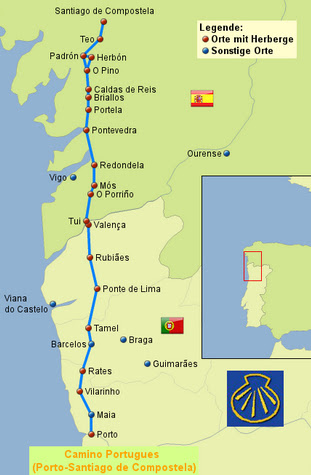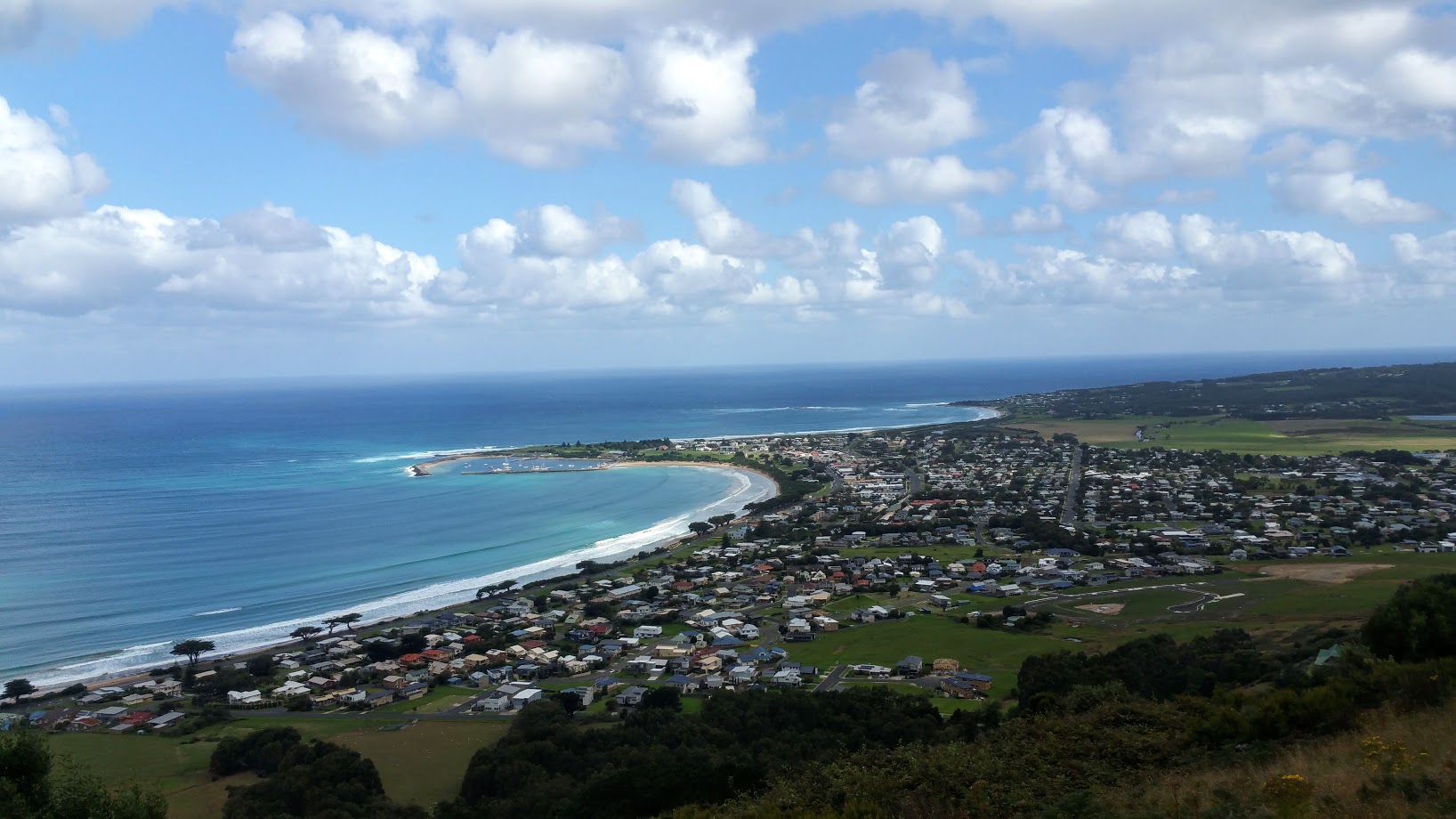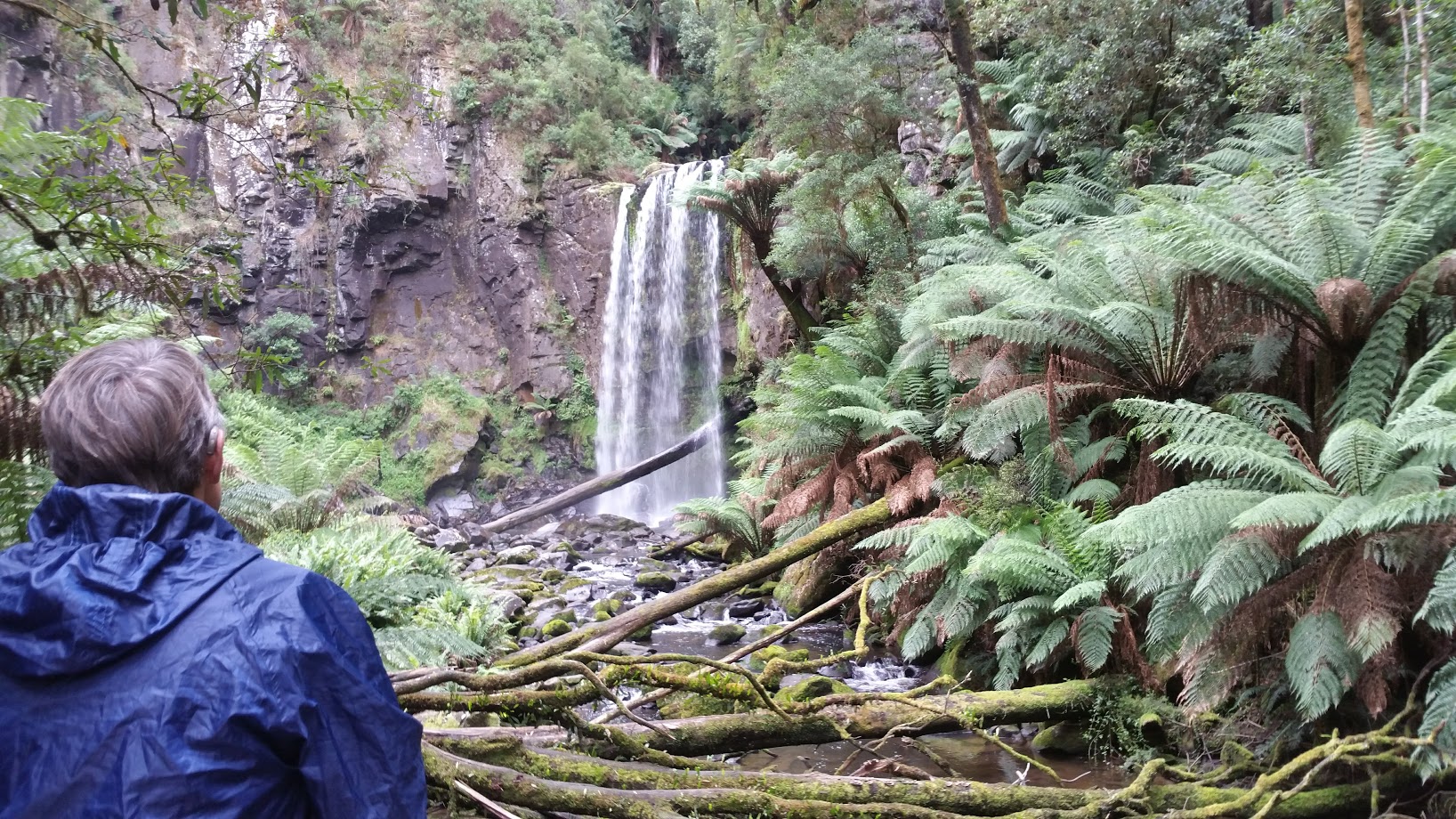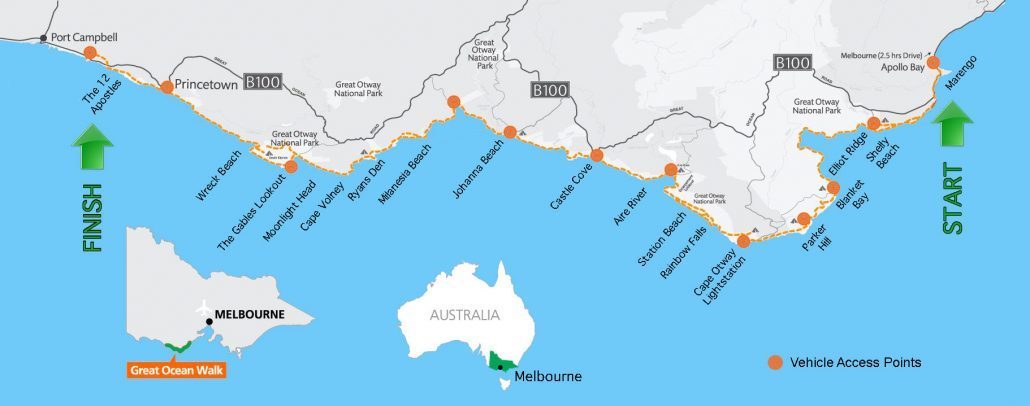"Jan, I’ve booked to walk the Great Ocean Walk in February.”
“Wonderful! Who are you going with?”
“By myself.”
“Sue, it’s not a good idea to go alone. Some places are very rough and isolated. It can be lonely, too. I suggest you travel with a group of three or four others.”
“No, I’ll be OK. I‘ve found a travel business that will provide maps, book accommodation, and check on my progress by phone each night.”
“Sue, Sue, Sue, they will charge you a fortune, probably $2,000 for five days!”
“Actually, it’s $2,500.”
Enlarge

Three years earlier, Jan walked the Camino in Portugal and Spain. Even though the Camino is a famous and renowned pilgrimage, Jan often made comparisons in her mind to the Great Ocean Walk. There was no comparison! The GOW is popular too, but only in specific tourist areas. Hikers walk along well-constructed tracks, on cliff tops, with crashing waves in the background. Each day the scenery is different, one day walking in a rain forest, the next on a deserted beach or through tea-tree covered coasts. The GOW tracks are not open to cars. There’s no traffic to negotiate, unlike the Camino, and very few hikers, also unlike the Camino. The Great Ocean Walk invites hikers to walk day after day, through natural beauty, exquisite flora, and delightful fauna.
“Ok, I’ll walk with you.” Jan replied, “I have always wanted to try it again.” Detailed and graded maps show the whole track broken into sections. Some sections are only six kilometres; others are twenty kilometres long. Some are difficult, and some are easy, but that also depends on the fitness of the hiker. The weather on the day of the walk can also impact the difficulty.
Sue and Jan booked to stay at a caravan park near Cape Otway. It was less than halfway along the Walk, but it provided comfortable beds, and an excellent base to set out from each day. They travelled in one car and booked a taxi to meet them each morning. They parked the car at the end of the planned section. The taxi then drove them from the parked car to the starting point. This way, the women were able to travel at their own pace without the pressure to meet an awaiting pick-up ride. Their car was always waiting at the finish. We will see later that this proved to be a valuable decision for them.
There were other alternatives, such as a bus trip. The bus ran once in the morning and returned once in the afternoon. Both trips were at a set time. Jan and Sue wanted to walk at their own pace, rushing to meet a bus in the bush didn’t make sense. Another choice was to take two cars and park one at each end of the planned walk each day. A lot of travel is involved with two cars, as you need to travel back and forth along the track before the daily hike has started. The easiest and most expensive solution is to join a tour group with a guide, a dedicated pick-up van, with all accommodation and meals ready and waiting at the end of the day. Jan and Sue are pensioners; they decided on the budget choice with a self-guided trip and walked at their own pace without pressure.
Enlarge

DD Woods
The first day saw the car packed to the rafters with two very excited seniors driving to their destination. To get their bearings, and seek any current information available, the women stopped at Apollo Bay. A short car trip to Marriners Lookout car park from Apollo Bay then a steep walk up the path to the lookout, set the scene of what’s ahead.
Thursday: The first section was an easy start, four and a half kilometres, Mareno to Shelly Beach. They finished early, so they drove back to Apollo Bay for a delicious pizza lunch. They stopped at the supermarket to stock up on supplies because Cape Otway is more than twenty-five kilometres away from any Supermarkets. Heading back to Cape Otway they veered off the highway first to the Apollo Bay Fishermans’ Co-op and then to visit Beech Forest. Alan, the taxi driver, had recommended the trip to Beech Forest, earlier in the day. He failed to mention that the bitumen ceased as they turned the first corner off the highway. The next twenty kilometres were in a winding, gravel, dust bowl, walled in by towering gum trees with giant tree ferns at their base.
Enlarge

DD Woods
After what seemed like endless twists and turns, they reached the Californian Redwood Plantation. It was planted as an experimental logging plantation in the 1930s; it was never logged and is now protected.
The trees can reach up to one hundred and fifteen metres in height, an overwhelming sight, well worth the trip up the gravel road.
Further along the gravel, they stopped at Hopetoun Falls. A few steps from the car park a viewing platform tempted them to walk down the steps for a closer view.
Magnificent tree ferns surrounded the descent down the stairs. The falls were not fully visible until the final platform: two hundred and fifty steps down. Once again, the effort was rewarded. The falls are ten metres high, with a gushing water flow which leads to a rippling brook.
Hundreds of tree ferns camouflaged the surrounding cliffs. The silence was deafening except for the plunging waterfall. The women dragged themselves back to reality and climbed the two hundred and fifty steps back up to the car. The sun had started to set as they headed back to the caravan park. It had been a long day, but they knew that the real hiking would start tomorrow.
Enlarge

DD Woods
Part Two/ Friday, Peter the taxi driver meets the hikers at Blanket Bay…
